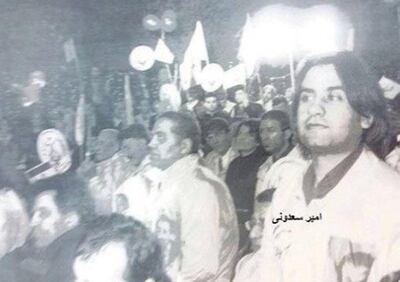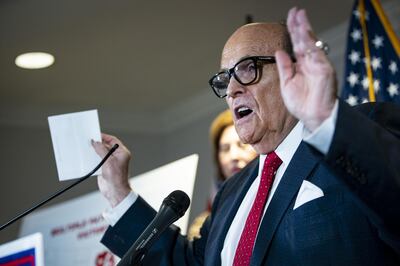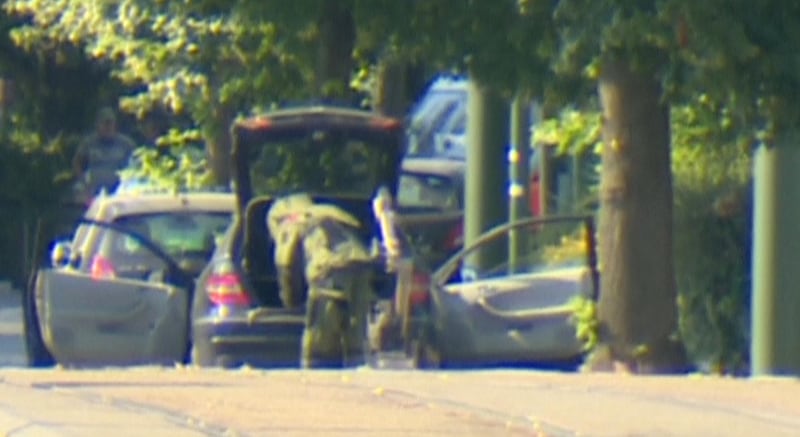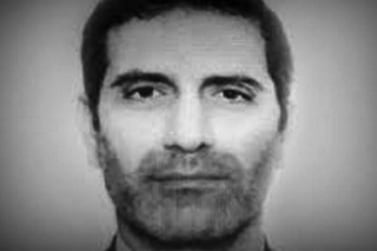When alleged Iranian sleeper agent Amir Saadouni received the cryptic text message from the senior intelligence officer, it was time to act. “For 24 people, 12 euros apiece, we can have very luxurious potatoes,” it said.
After a flurry of texts, the two men decided to cater for 28 – a code which Mr Saadouni later translated for Belgian police. “The 28 is the date, price usually means the time,” he said. “Luxurious means Luxembourg - potatoes doesn’t mean anything.”
The message was an order for Mr Saadouni and his wife to travel on June 28 for a pre-planned rendezvous at a Pizza Hut restaurant in the city’s old town.
Prosecutors will claim this week that one of Iran’s most senior intelligence operatives, Assadollah Assadi, handed them a bag at the restaurant containing a half-kilogramme package of triacetone triperoxide explosive, or TATP.
The alleged target was the annual gathering two days later in Paris of dissident group the National Council of Resistance of Iran (NCRI), attended by some 25,000 people. But the plot was scuppered on the day by a pan-European police operation following a tip-off from a foreign intelligence service.
Four people, including Mr Saadouni and diplomat Mr Assadi, go on trial this week after a two-year police investigation accused of attempted terrorist murder. If convicted they face up to 20 years in prison.
A police report of a surveillance operation, seen by The National, suggested that Mr Saadouni and his wife Nasimeh Naami, were seen parking their car and heading towards Rue Philippe II – a shopping street.
As they walked across Place d’Armes, they were lost to the surveillance team who did not pick them up again for nearly 90 minutes. In the meantime, the couple sat down with Mr Assadi in Pizza Hut where the explosives hidden inside a handbag were handed over, according to Mr Saadouni.
“I really didn’t know I had been given an explosive,” he said. “I asked Assadi what was inside the package. Assadi answered he would explain later.”
The recruitment
The two men first met in 2015 in Munich, Germany, the final stage of an eight-year grooming process by the Iranian Ministry of Intelligence and Security (MOIS), according to Mr Saadouni.
He was an insider – he claimed to be a supporter of the Mujahideen-e-Khalq (MEK), the organisation behind the NCRI, which has been banned in Iran since 1981.
But Mr Saadouni was not a committed opponent of the regime, a friend told The National, and the group denied that he was ever a member.

His motivation in declaring his opposition to the regime was to secure citizenship of Belgium, according to the friend. By convincing local authorities that he was fleeing political repression he thought it would help his case to stay in Europe.
Mr Saadouni, an unemployed former deckhand who had lived in Belgium since 2003, told police that Mr Assadi – who he knew only as Daniel – was the third Iranian official he had met since 2007. “He said he knew lots of stuff about me,” he told police.
At Daniel’s request, Ms Naami accompanied her husband to their meetings. After Munich, these included trips to Salzburg, Vienna, Milan and Venice, according to Mr Saadouni.
They would usually meet in front of a church building, or crowded places. Once they met on a train. “Daniel never came to Belgium,” Mr Saadouni told police. “He said that was because of the European Parliament and NATO – this was very delicate.”
Final preparations
Mr Saadouni told police that he heard about Paris for the first time in the spring of 2019, about three months before the planned attack. Planning started much earlier, police documents suggest.
Mr Assadi kept in touch with his suspected operatives by text after the Luxembourg meeting. They talked about installing a game on a Playstation, which lawyers involved in the case believe meant preparing the bomb for the plot.
By June 30, everything was ready.
Mr Saadouni and his wife left their home in Antwerp and headed south to Paris. Their destination was the convention centre in the Villepinte area of the French capital where a glitzy ‘Free Iran’ event was to be staged.
The NCRI was once listed as a terrorist organisation by the US and EU but has since renounced violence and has strong backing from many of President Donald Trump’s supporters as the government-in-exile of Iran.
Star speakers Rudy Giuliani, the former New York mayor and President Trump’s personal lawyer, stood before a group of former senior US officials to declare the days of the clerical regime were coming to an end.

“The mullahs must go, the Ayatollah must go and it must be replaced by a democratic government,” he said to loud cheering.
Mr Saadouni and his wife never made it. They were stopped by a specialist police team in Brussels and the explosive was found wrapped in plastic in a toiletry bag, inside a suitcase.
Inside Ms Naami’s handbag, police found a digital remote control to apparently trigger the device. “The overall construction is highly professional,” according to a report by the Belgian authorities.
Mr Assadi sent a text message to the couple that evening. “All well? Are you okay?” he wrote, but got no reply, according to phone data records.
He was arrested the following day at German motorway rest stop. Mr Assadi's lawyer, Dimitri de Beco, said that his client contested the charges against him and will claim he had diplomatic immunity.
Aftermath
The unravelling of the plot could not have come at a more sensitive time for Iran, just a month after Mr Trump pulled out of the 2015 nuclear deal with Iran.
The EU sharply rebuked Mr Trump for jettisoning the agreement. Experts expressed surprise that Tehran should seek to antagonise its member states while it was trying to keep the deal alive.
Iran claimed it was a “false flag” operation designed to embarrass President Hassan Rouhani before he travelled to Europe to promote the deal.
But the European Union updated its terror blacklist to include Mr Assadi, his boss and the directorate for internal security at MOIS. Britain and Germany followed up by banning the Iranian-backed group Hezbollah in 2020.
Critics of the EU said it was not enough and claimed its desire to keep Iran within the nuclear deal had emboldened Iran’s foreign ambitions.








